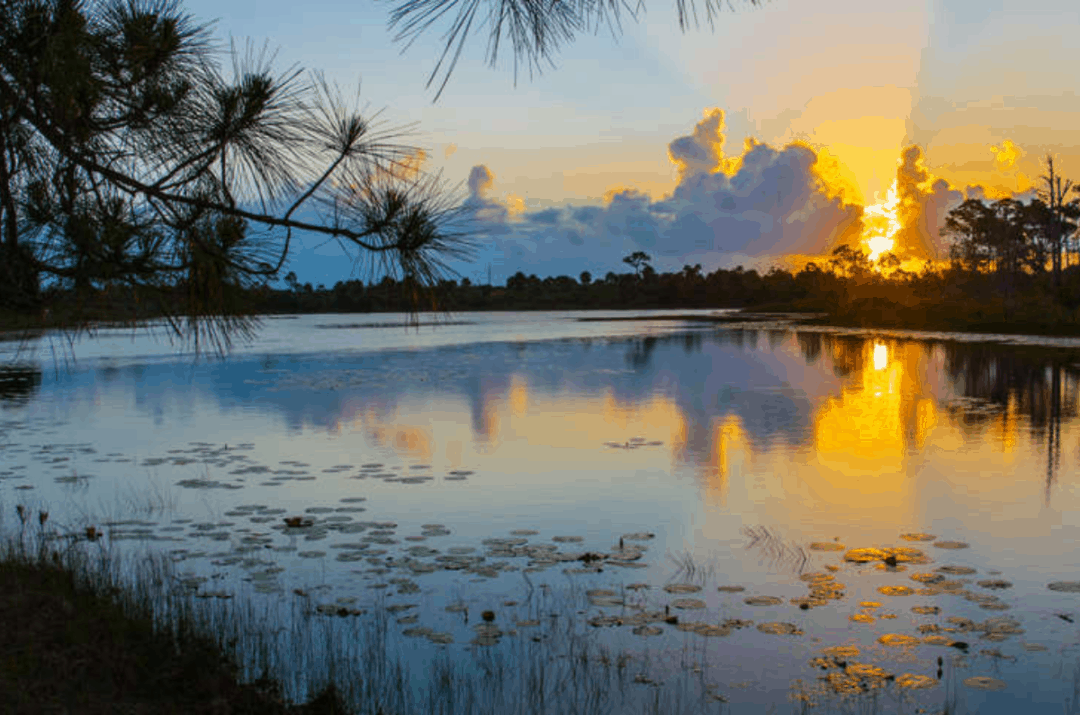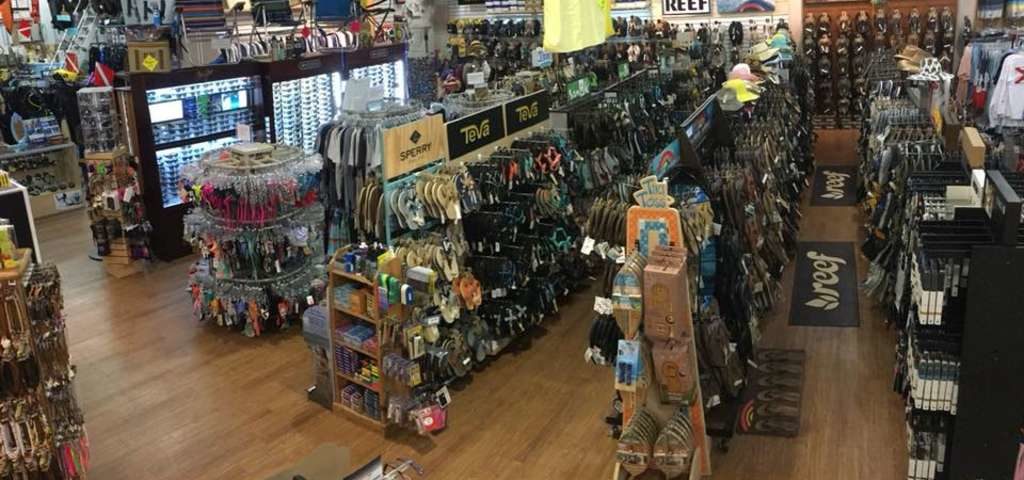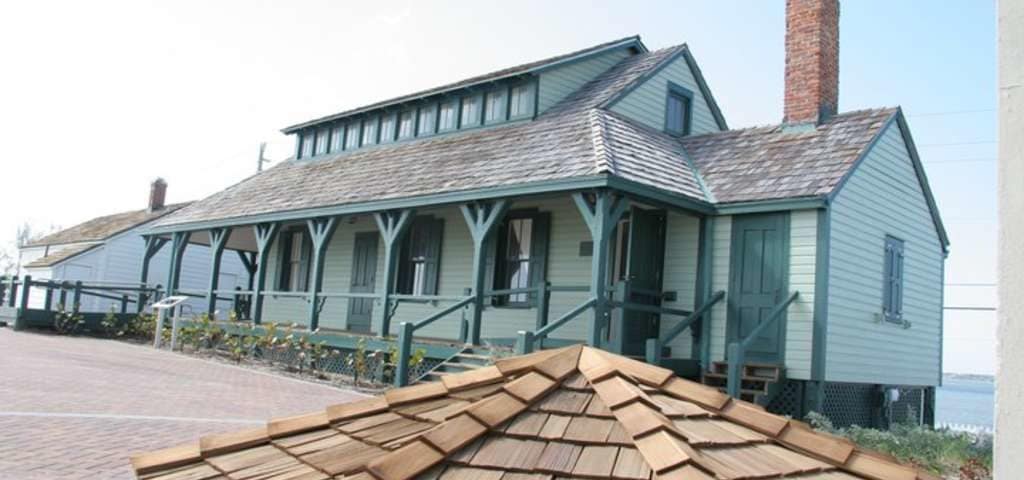Back in the day (we’re talking way back—like, 17th-century back) Florida’s Atlantic Coast was a perilous place for ships. Strong winds and storms frequently sank ships or drove them ashore. The most famous wreck was the Treasure Fleet of 1715, which wrecked just north of Martin County, Florida. Determined treasure hunters are still searching these wrecks for troves of Spanish gold, and a few of the fleet’s ships, which were laden with riches, remain undiscovered.
But even a bit further south, in Martin County, shipwrecks have played a big role in shaping the area. Find out how one of Florida’s most beautiful state parks owes its name to a shipwreck, learn about the stalwart houses of refuge built to rescue shipwreck survivors, and even explore a preserved shipwreck for yourself.

1. Jonathan Dickinson State Park
Even though the shipwreck this state park is known for was burned hundreds of years ago and can no longer be viewed, it’s still an important part of the history. In August of 1696, a barkentine ship called Reformation set out from Port Royal, Jamaica, to Philadelphia. On board was a Quaker merchant named Jonathan Dickinson and his family, who were hoping to settle in Pennsylvania. However, the Reformation was separated from its convoy and a hurricane blew it onto a reef, and then ashore near present-day Hobe Sound.
Everyone who was alive on the ship at the time survived, although many were sick or injured—but the wreck was just the beginning of their troubles. The party was discovered by local Jobe Indians, who took them captive. The party managed to convince the Jobes to bring them from town to town up the coast in search of help. The treatment they received along the way ranged from kind to cruel, until a crew of Spanish soldiers arrived from St. Augustine. The soldiers helped guide them to the city, and from there, Jonathan Dickinson and his family were able to reach Philadelphia.
In Philadelphia, Jonathan Dickinson did very well for himself, serving as the city’s mayor twice, and publishing a popular account of their journey from Jamaica to Philadelphia.
Today, the park offers camping, hiking and biking trails, boat tours, kayaking and canoeing on the Loxahatchee River, a nature center, and tons more. Climb to the top of the lookout tower and take in the views of the wild landscape that Jonathan Dickinson and his family had to traverse way back when.

2. Stuart Scuba
If you want to explore a shipwreck for yourself, then you’ll likely need to get scuba-certified. Stuart Scuba offers a breathtaking variety of courses and training options, from recreational diving to technical, professional, or even medical/rescue diving. Even if you’re just getting started, knowing that these guys are experts is a relief. You can even refresh or continue prior dive training. They also offer equipment rentals and sales, so it’s a one-stop shop for all things scuba.
If you’re already scuba-trained, you can hop on one of Stuart Scuba’s dive charters. These always include the boat ride, an experienced divemaster, snacks, a shower onboard, and more.

3. Deep Six Dive & Watersports
Another hub for scuba information is Deep Six Dive & Watersports. If you’re just starting on your diving journey, you can get the classroom portion of the Open Water Diving certification done online at your leisure, and then take the in-water training with the crew at Deep Six.
If you’re already certified, then look into their unique “Save Our Reefs” Specialty Package. It’ll certify you in four specialty courses all aimed at learning about and experiencing coral reefs: Project Aware, Peak Performance Buoyance, AWARE Coral Reef Conservation, and Digital U/W Photo. They also have a store that’s loaded with gear that goes far beyond scuba. Surfing, swimming, and skating gear and accessories can be found here, too.

4. Georges Valentine Underwater Archaeological Preserve
Once you get your scuba certification and gear sorted out, put your skills to use and dive a real-life shipwreck. The Georges Valentine Underwater Archaeological Preserve protects the remains of a wrecked brigantine ship called the Georges Valentine, which sank in 1904 on its way from Pensacola to Buenos Aires.
Seven of the 12 crew members safely made it to the house of refuge onshore, but five perished in the wreck. It’s about 100 yards offshore, and is broken into five main pieces, which are partially buried in the sand. As you dive (or snorkel!) the site, look for angelfish, kingfish, sharks, moray eels, stingrays, lobster, stone crabs, hermit crabs, puffer fish, parrotfish, snapper, and soft corals.

5. House of Refuge Museum at Gilbert’s Bar
At the turn of the century, 10 houses of refuge lined Florida’s Atlantic Coast, serving as stations where shipwrecked sailors could find relief. Only one remains today, the House of Refuge Museum at Gilbert’s Bar in Stuart, Florida. As such, it’s the oldest building in all of Martin County. This is where the survivors of the Georges Valentine wreck were able to find help. It’s been restored to appear as the keeper’s quarters would have in 1904, and has displays of historical seafaring and lifesaving equipment. There’s even a maritime-themed gift shop located in a historic 1930s boathouse nearby.
Though shipwrecks are, at this point, virtually a thing of the past, there’s no denying the influence the maritime industry and the risk of wrecking had on this stretch of coast. Whether you’re looking to immerse yourself in the history of the area, or you’re looking for an epic dive site, the wrecks of Martin County’s coast are still playing a role in the culture today.








